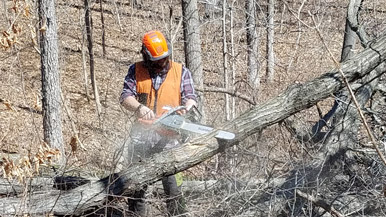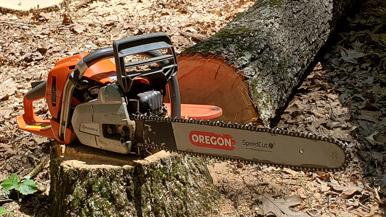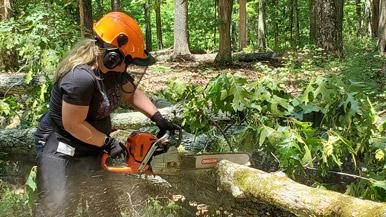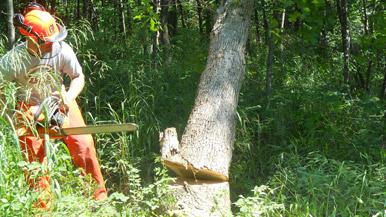 Chain saws are relatively common and may seem simple to operate. But felling trees and clearing brush with a chain saw are operations that require training and proper safety precautions. Logging is among the most dangerous professions. And if it is dangerous for professionals, it is even more so for the average woodland owner.
Chain saws are relatively common and may seem simple to operate. But felling trees and clearing brush with a chain saw are operations that require training and proper safety precautions. Logging is among the most dangerous professions. And if it is dangerous for professionals, it is even more so for the average woodland owner.
Working with a chainsaw involves many different work situations with both simple and more complicated steps. The chainsaw is a very effective tool, but it can also be dangerous if used improperly. To avoid accidents and unnecessary strain, you should use the correct working techniques, the best possible safety equipment, and a modern chainsaw with functioning safety features.
The following information will help you select, maintain, and operate your saw. Take time to prepare yourself for operating a chain saw. With safety in mind and with the proper equipment, a chain saw can be the most effective tool in the woodland owner’s toolbox.

Selecting and Maintaining a Chain Saw
The first, and possibly the most important, step when shopping for a chain saw is to select a saw that fits your needs. Each type of chain saw has advantages and disadvantages.

Operating a Chain Saw Safely
This Guide will help prepare both yourself and the chain saw before starting the engine, understand the reactive forces at play when cutting, explain how to safely fuel the saw, and how to transport and store the saw.

Felling, Limbing and Bucking Trees
Whether you are using a chain saw to cut firewood, trim trees or harvest large timber, you will be performing three basic operations: felling, limbing and bucking. Felling involves cutting a standing tree and dropping it in the place you want it. Limbing is the removal of the branches from either standing or downed trees. Bucking is the process of cutting a downed tree into appropriate lengths.

Professional Timber Harvester Training
Each year the Missouri Forest Products Association, in conjunction with the Missouri Department of Conservation, conducts professional timber harvester training sessions around the state. Don’t let the word ‘professional’ scare you. The five-day course is open to woodland owners. You will learn from the best and get to know professional loggers in your area. Contact the association’s office for the schedule.
Your selection of a chain saw is your personal choice.
The following links to name brand chain saw manufacturers are provided because they contain invaluable safety information and should not be construed as an endorsement of their products.